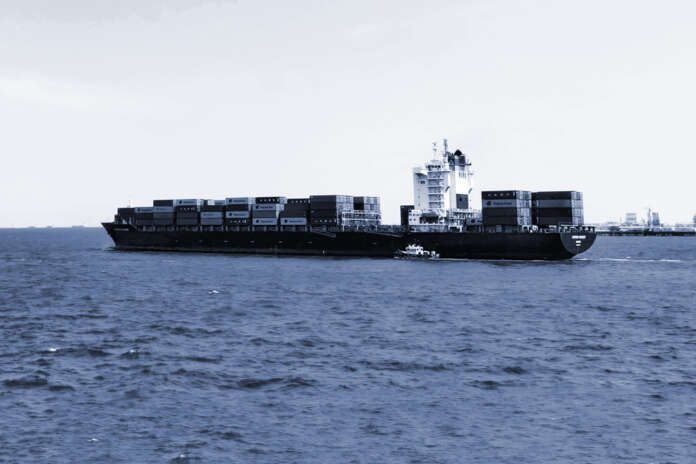
The national holidays in China offered a brief respite but they didn’t throw the container and dry markets off course. [ds_preview]By Michael Hollmann
Freight and charter rates across container, dry bulk and project/breakbulk shipping have either recovered quickly or even hit fresh highs shortly after Chinese New Year, the only exception being a rather muted capesize segment.
The effect that the break in industrial activity in China had on container shipping was modest by all accounts. The flow of loaded containers into the ports slowed as to be expected, however the cargo backlog in ports and yards was big enough to prevent any drop in utilisation of liner vessels. Firm statistical evidence is not available due to the lag in loading data. But idle fleet data shows that inactive capacity has only continued shrinking. Further, anecdotal reports from freight forwarders suggest that the tightness and prolonged lead times for bookings on headhaul routes from Asia and also from Europe (transatlantic) have not relaxed. As things stand, booking activity for containers ex China ramps up faster than the backlog of cargo dissipates, thus preventing any meaningful relaxation in the market. More or less all official statements either from container line or forwarding executives in the past weeks say that the extreme capacity shortages will continue into the second half of the year.
Following slight reductions in container spot rates from near all-time highs, the lines are already pressing for notable increases again, through general rate increases (GRI) or peak season surcharges. This goes especially for the Far East/North America trade with a 1,000 $/FEU hike coming up and for the transatlantic westbound trade where peak season surcharges are to be increased by 2,000 $/TEU going into spring. Looking at the Xeneta Shipping Index for container freight rates with up to 31-days validity, only the Far East/North Europe route suffered a 5.4 % decline in prices month-on-month whereas rates for transpacific eastbound and especially for transatlantic westbound liftings went up further. Important to keep in mind, though, that fleet productivity in container shipping remains heavily constrained due to port congestion on the US West Coast and in China where local covid outbreaks and quarantine measures in port cities continue hampering cargo operations to some extent.
Meanwhile chartering enquiry by liner operators perked up remarkably again after a short lull. Short-term and longer period rates both started trending up, pushing charter market indices like the New ConTex past their record levels of last autumn. Even at these dizzy heights, forward demand for tonnage as far ahead as 2023 remains brisk – both in chartering and sale & purchase.
All indices for breakbulk rising
Due to lack of cellular vessels, plenty of tonnage demand still flows into the geared bulk carrier and multipurpose segments. »After a brief quiet spell around Chinese New Year, all sorts of conventional ships capable of carrying containers are sought-after again«, as one Hamburg shipbroker explained. The other alternative for shippers is to convert containerized cargoes back into bulk and breakbulk which resulted in more full charters of multipurpose ships for commodities like bagged coffee ex Brazil in recent weeks. The effect is the same: more general cargo and bulk vessels get used for business previously covered by container lines.
Thus it is no surprise to see freight and especially period charter rates for multipurpose heavy lift ships continue climbing. Average period hires for 12,500 dwt freighters are now near 22,000 $/day after a +4.6 % month-on-month rise in February, according to Toepfer’s Multipurpose Index. »The market is pretty strained, it is tough to find any additional vessels«, said Lars Feller, president of dship Carriers. Project shippers are thus faced with an extreme lack of spot or early prompt capacity. »Exporters in Europe have to factor in 2–6 weeks waiting time. In Asia it’s even 2–4 months,« according to Feller. Lars Rolner, founder and partner of United Heavy Lift (UHL) with its fleet of 26 multipurpose ships, said that his company has seen continued high enquiry from all high-end project and machinery segments, »a lot of wind energy equipment but also yachts, port mobile cranes, all sort of plant equipment and more and more oil- and gas-related cargoes.« Two large freight contracts signed by UHL last year are alone going to absorb around 40 % of its fleet capacity, as Rolner points out. Further large project contracts are under negotiation, he said.
The Market Sentiment Index (MSI) of One World Shipbrokers – the shop set up by former SAL COO Justin Archard in 2020 – points to further upside potential in project shipping. Gauging a range of factors from cargo booking activity, voyage results to investment and recruitment trends at carriers, the index went up further by 1.1 to 58.8 points (values >50 signalling growth) for January. The leading indicator for the 6-months outlook even increased a bit faster, by 2.0 to 59.4 points. ?

















